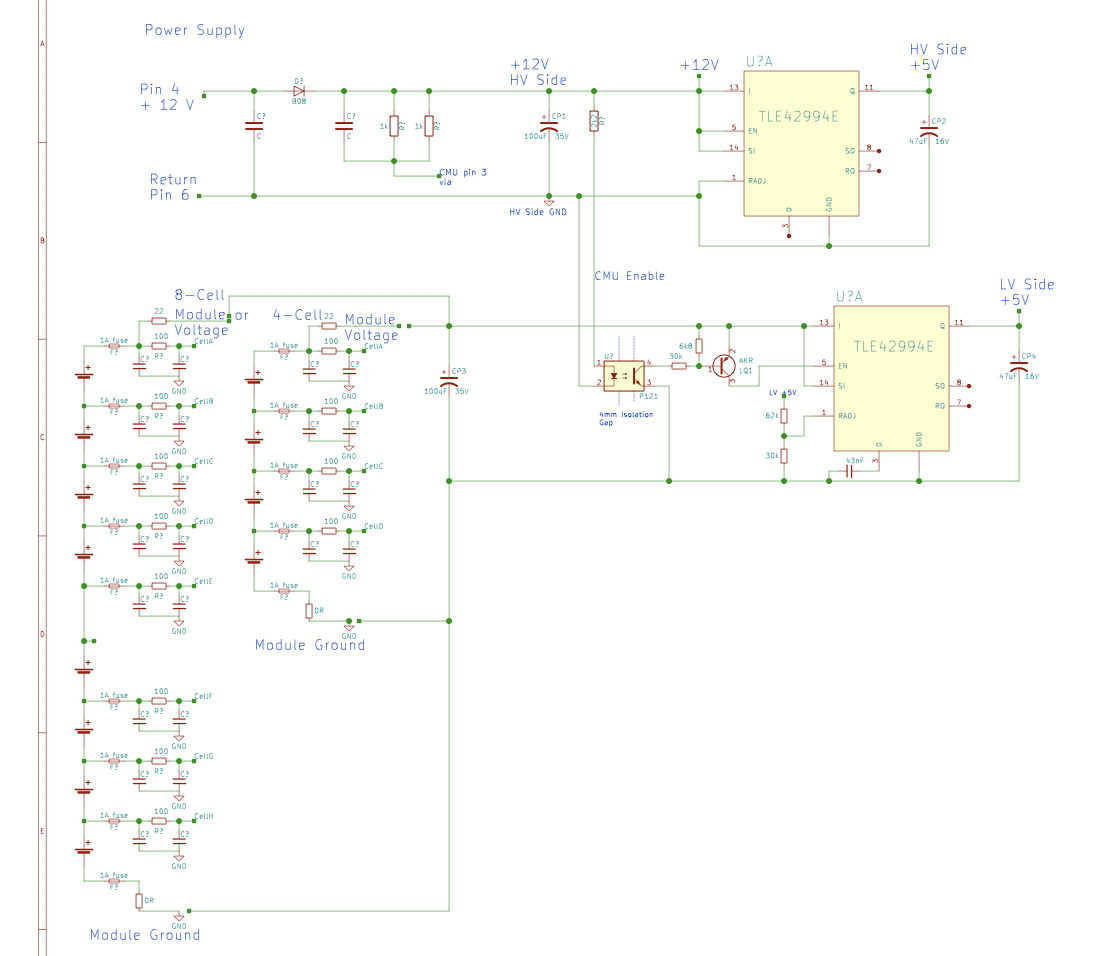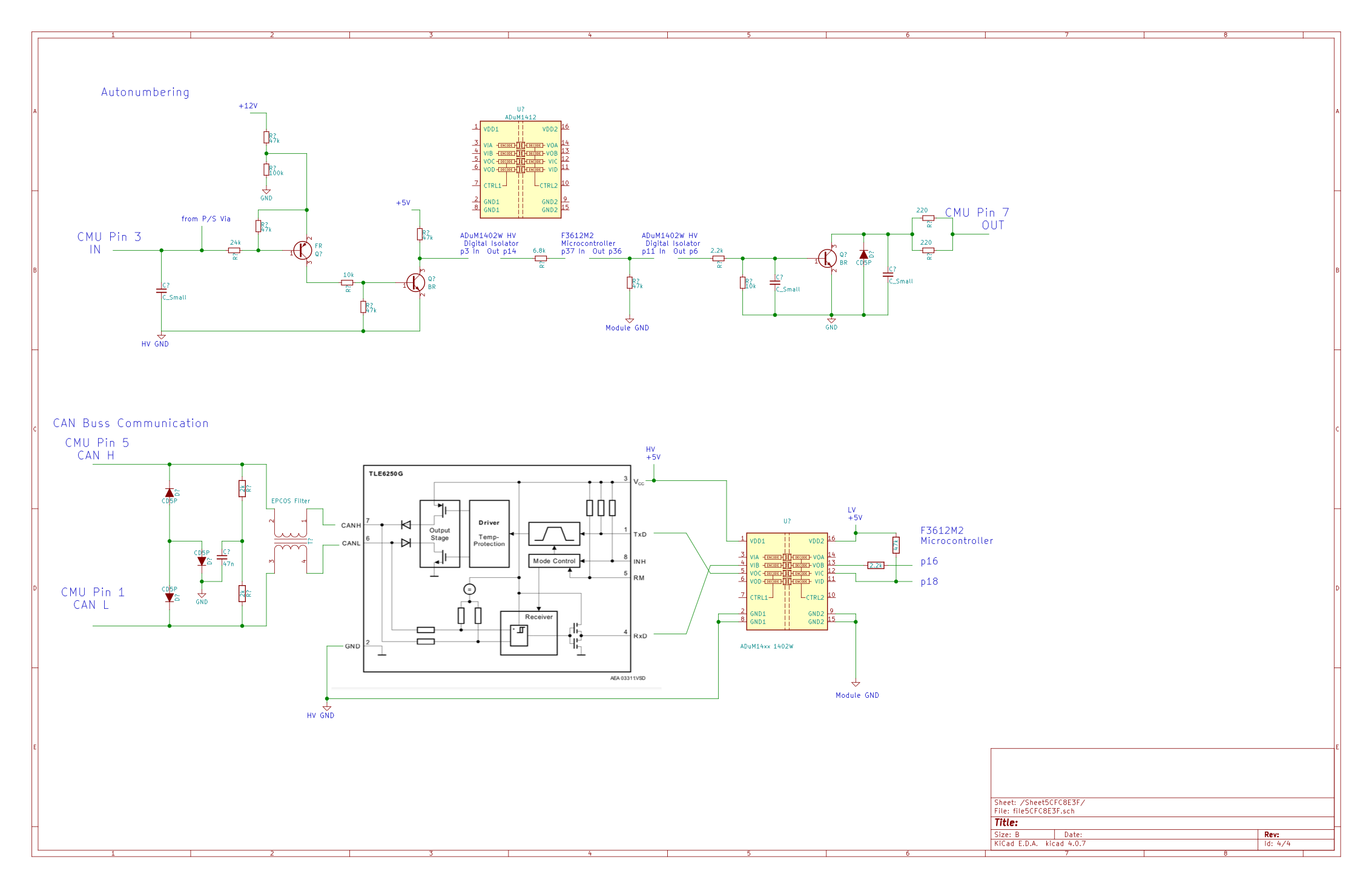Hello everyone,
I started developing a residential battery to store solar electricity.
My project is well advanced, I managed to connect a homemade card to the battery, read the CAN frames sent by the CMU cards and control a Solax inverter to manage the charging/discharging of the battery.
Today, the battery's CAN bus no longer works at all. A voltage of 12V appears on the two signals CANH and CANL as soon as I supply the battery with 12V.
Several people on the forum have looked very closely at the CMU cards.
Do you have any idea what could be happening?
I'm very afraid of having made a mistake on the CAN bus and having broken all the CMU cards...
I thank you very much in advance for the help and the ideas that you are willing to share.
Have a nice day
Dom
I started developing a residential battery to store solar electricity.
My project is well advanced, I managed to connect a homemade card to the battery, read the CAN frames sent by the CMU cards and control a Solax inverter to manage the charging/discharging of the battery.
Today, the battery's CAN bus no longer works at all. A voltage of 12V appears on the two signals CANH and CANL as soon as I supply the battery with 12V.
Several people on the forum have looked very closely at the CMU cards.
Do you have any idea what could be happening?
I'm very afraid of having made a mistake on the CAN bus and having broken all the CMU cards...
I thank you very much in advance for the help and the ideas that you are willing to share.
Have a nice day
Dom


